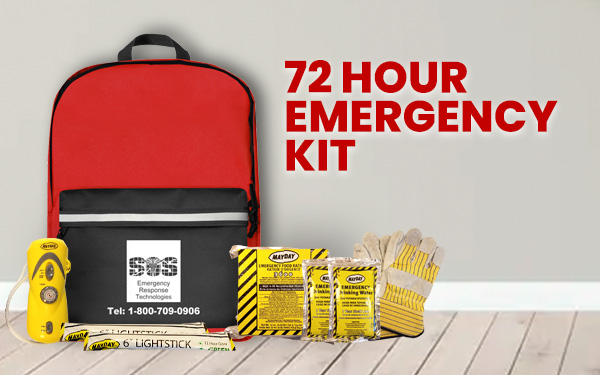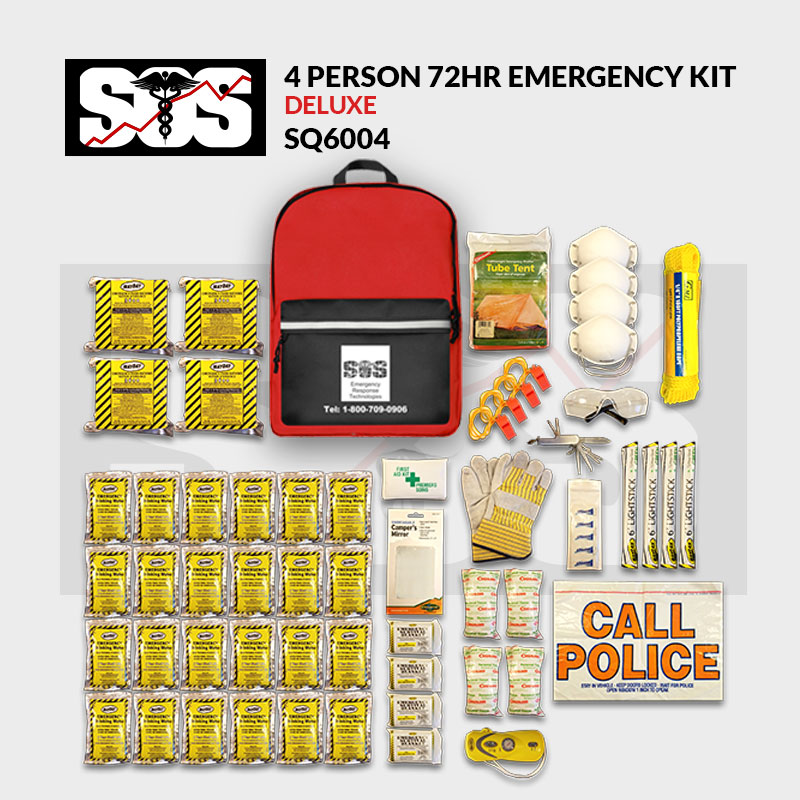The 72 Hour Emergency Kit Checklist
Are you prepared for a natural disaster or emergency situation? Learn why British Columbians need a 72 hour emergency kit and what to include in it.
British Columbia is known for its beautiful landscapes, stunning natural beauty, and outdoor recreation opportunities. However, the province is also prone to natural disasters such as earthquakes, wildfires, floods, and severe storms. These disasters can strike without warning, leaving families and communities vulnerable and in need of emergency assistance.
The best way to prepare for these situations is to have a 72-hour emergency kit. In this article, we will explore why British Columbians need a 72-hour emergency kit, what to include in it, and how it can save lives in times of crisis.
Why British Columbians Need a 72 Hour Emergency Kit:
Natural Disasters in British Columbia:
British Columbia is prone to a variety of natural disasters, including earthquakes, wildfires, floods, and severe storms. These disasters can strike without warning, leaving communities devastated and in need of assistance.
Importance of Preparedness:
By being prepared for emergencies, you can help protect yourself and your loved ones in times of crisis. Having an emergency kit can help ensure that you have the necessary supplies and resources to survive until help arrives.
Emergency Services May Be Delayed:
During a natural disaster or emergency situation, emergency services may be delayed or overwhelmed. Having an emergency kit can help ensure that you have the necessary supplies to survive until help arrives.
To Avoid Scrambling for Supplies:
In the aftermath of a disaster, essential supplies such as food, water, and medical supplies can quickly become scarce. By having an emergency kit, you can avoid scrambling for supplies and focus on staying safe and secure.
What Should Be Included in Your Emergency Kit?
 Water and Food Supplies:
Water and Food Supplies:
Be sure to include at least one gallon of water per person per day for at least three days. You should also include non-perishable food items such as canned goods, non thirst provoking food rations, and dried fruit.
 First Aid Kit and Medications:
First Aid Kit and Medications:
A well-stocked first aid kit is essential in an emergency situation. Be sure to include essential medications, bandages, antiseptics, and other medical supplies.
 Personal Hygiene Supplies:
Personal Hygiene Supplies:
In addition to food and water, you should also include personal hygiene supplies such as toilet paper, wet wipes, and hand sanitizer.
 Important Documents and Emergency Cash:
Important Documents and Emergency Cash:
Be sure to include copies of important documents such as birth certificates, passports, and insurance policies. You should also include emergency cash in case ATMs and credit card machines are not functioning.
 Warm Clothing and Shelter:
Warm Clothing and Shelter:
In case of cold weather, be sure to include warm clothing such as jackets, blankets, and hats. If you are forced to evacuate, you may also need to include a tent or other shelter.
 Lighting and Communication Tools:
Lighting and Communication Tools:
Be sure to include flashlights, batteries, and a portable radio to stay informed of emergency alerts and updates.
Importance of Emergency Preparedness:
Saves Lives:
In emergency situations, every second counts. By being prepared, you can help save lives and ensure the safety and well-being of yourself and your loved ones.
Reduces Panic and Anxiety:
In the event of an emergency, panic and anxiety can make a bad situation worse. By being prepared and having a plan, you can reduce stress and anxiety and increase your chances of survival.
Speeds Up Recovery and Reconstruction:
Being prepared for an emergency can help speed up the recovery and reconstruction process. By having the necessary supplies and resources, you can begin rebuilding your life more quickly.
How to Prepare for Emergencies: Tips and Tricks
 Make a Plan:
Make a Plan:
Create a family emergency plan that includes a meeting place, emergency contacts, and a communication plan.
 Stock Up on Supplies:
Stock Up on Supplies:
Be sure to have at least a 72-hour emergency kit and consider storing additional supplies such as extra food and water.
 Stay Informed:
Stay Informed:
Stay informed of emergency alerts and updates by signing up for alerts and monitoring the news.
 Learn Basic First Aid and Survival Skills:
Learn Basic First Aid and Survival Skills:
Take a first aid and CPR course, learn how to use an AED and deploy the DRSABCD Action Plan. Learn basic survival skills such as how to start a fire and build a shelter.
Frequently Asked Questions about Emergency Kits:
How Long Should I Prepare for?
Emergency management in British Columbia recommend having at least a 72-hour emergency kit, but it’s a good idea to prepare for longer in case of extended power outages or other disruptions.
What Should I Include in My First Aid Kit?
Your first aid kit should include essential medications, bandages, antiseptics, and other medical supplies.
How Much Water Should I Store?
Experts recommend storing at least one gallon of water per person per day for at least three days.
Can I Use Tap Water in My Emergency Kit?
If tap water is not available or safe to drink, you can treat it with purification tablets or by boiling it.
What Should I Do If I Have Pets?
Be sure to include food, water, and other supplies for your pets in your emergency kit. You should also have a plan for how to care for them during an emergency.
Be Prepared for the Unexpected
Natural disasters and emergencies can strike without warning, leaving families and communities vulnerable and in need of emergency assistance. By having a 72-hour emergency kit and being prepared, you can help ensure the safety and well-being of yourself and your loved ones. Don’t wait until it’s too late – start preparing your emergency kit today. Remember, a little preparation can go a long way in times of crisis.
Where Emergency kits can be important.
Office Buildings, Schools & Daycares, Retail Stores, Government Buildings, Banks, Lawyer Firms, Accountant Offices, Personal & Work Vehicles etc.
By storing your emergency kit in a designated area that is easily accessible to all employees or staff, you can help ensure the safety and well-being of everyone during an emergency.


